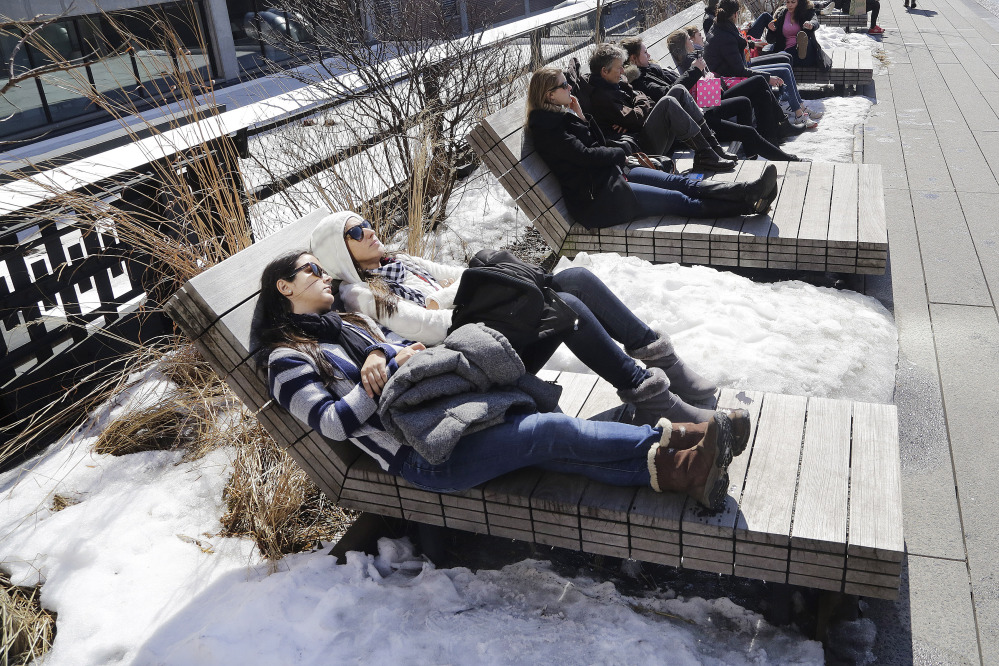BOSTON — A bit of warmth has filtered into the U.S. Northeast in the past few days.
New York’s Central Park reached 54 degrees Fahrenheit on Monday, while Washington reached 62 and Philadelphia got to 57, according to the National Weather Service.
Even in Boston, where snow still covers the ground by the foot, the high Monday was 48.
Call it a flirtation with spring.
The problem is, we’re still in a relationship with winter.
Forecasts from the commercial meteorologists and the U.S. Climate Prediction Center in College Park, Maryland, all say that by March 20, the official start of spring in the Northern Hemisphere, things will take a turn for the colder.
The range is about 3 to 5 degrees below normal from the northeastern edge of Texas to Maine, according to forecasts from vendors MDA Weather Services, Commodity Weather Group LLC and WSI Corp.
“We feel pretty strongly that, by the last week in March, we will be seeing some unusual cold back in the U.S.,” said Todd Crawford, a meteorologist with WSI in Andover, Massachusetts. “The potentially extreme magnitude of the cold will be primarily driven by the unusually strong MJO.”
The MJO?
Yes, the MJO. Short for Madden-Julian Oscillation, the MJO is essentially “a pulse of energy that travels around the globe on the equator about once every 40 days,” Crawford said.
When the MJO crosses the International Dateline in the central Pacific Ocean, it will set off a series of events in the atmosphere that will end up strengthening a high pressure ridge near Alaska, said Tom Downs, a meteorologist with Weather Bell Analytics LLC in New York.
That will in turn strengthen a low-pressure trough over the central part of North America, and sliding down that chute will be the cold air that ruins the start of spring.
“Every time we get these Alaska ridge patterns this winter and last, we tend to get big cold outbreaks,” said Matt Rogers, president of Commodity Weather in Bethesda, Maryland. “I’m thinking this one could match or outperform the cold even we saw March 23 through 26 last year.”
As a reminder, lows in Central Park dropped into the 20s then and the daily average temperatures ranged from 10 to 17 degrees below normal, the weather service said. Washington had lows in the 30s and Boston posted 17 during that week.
As cold as it gets, it still won’t rival January and February. Time is on our side after all. The “normal” high temperature, which is the average of the past 30 years, rises about 10 degrees per month at this time of year, Downs said.
“We are not going to return to the Arctic freezer weather,” Downs said. “This is relative to late March and April; nowhere near what we just got ourselves out of.”
So we have that going for us, at least.
Send questions/comments to the editors.



Success. Please wait for the page to reload. If the page does not reload within 5 seconds, please refresh the page.
Enter your email and password to access comments.
Hi, to comment on stories you must . This profile is in addition to your subscription and website login.
Already have a commenting profile? .
Invalid username/password.
Please check your email to confirm and complete your registration.
Only subscribers are eligible to post comments. Please subscribe or login first for digital access. Here’s why.
Use the form below to reset your password. When you've submitted your account email, we will send an email with a reset code.